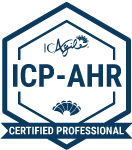Revolutionizing PayPal: The Largest Atlassian Cloud Migration in History
PayPal, a global leader in online payments, faced significant challenges with their existing infrastructure, which…

Effectively facilitate agile culture change - earn ICP-AHR certification and master skills for leading transformational agile initiatives.
Courses fill fast—register now and start mastering the skills that move business forward.
Standard Delivery: 14 hours of instruction over 2 days

The success of the Agile Manifesto and values in the software development arena and across IT has raised the possibility of applying the principles and concepts more broadly. In this course, the participants explore concepts and strategies to apply Agile across the organization.
Elements include organizational structure, leadership, jobs, roles and careers, re-engaging and empowering the workforce and the critical role of Human Resources in the transformation of a culture that values agility. You will learn methods for realigning your own organization for Agility and creating new ways to work. The course will also cover how leaders create an Agile organization.
This course has been approved by ICAgile to award students the ICAgile Certified Professional in Agile Human Resources (ICP-AHR) upon successful completion of the course. Cprime is currently the only US-based training provider that is approved by ICAgile to offer this certification.
Customer Testimonials:
"Absolutely eye opening to the value of addressing individual motivators and communication do's and dont's. The dynamic thinking portion was top shelf as well." - A. McDowall
"This training was great. The TTI Assessment was very informative. I learned a lot from this training that will better enable me to be a more productive member of my team." - K. McKinnie
Have a group of 5 or more students? Cprime also provides specialist private training with exclusive discounts for tailored, high-impact learning.

A better question may be “what happens if you don’t become an Agile organization?” Experts estimate there will be more technological change in the neAxt 20 years than there has been in the last 300 years. Plus, the generational change in the workforce to Millennials and Generation Z translates into an unprecedented amount of disruption in every organization. How can an organization succeed in this environment? By becoming more Agile. We review the following:
Exercise: You will consider examples where you have seen the technological and generational disruptions within your organization and the general market place. Also, we will discuss how leadership and human resources will need to adapt.
In order to design work in a new way we have to be open to a new way of thinking. In this section we discuss Agile Values and Manifesto to uncover the critical people centric elements to Agile’s success. We also introduce the participants to Dynamic Thinking where we take a holistic, systematic and growth mindset to challenges you face within an organization. We cover the following:
Exercise: You will consider how your organization would need to change to truly live the Agile Values and Manifesto. Also, following the introduction to Dynamic Thinking we will consider the opportunities and challenges to applying the concepts to support the development of an Agile / Lean Mindset within an organization.
The traditional hierarchical or siloed organizational structures has several significant constraints in achieving greater agility. These include lacking a holistic understanding of shifts in the needs and demands of clients, weaker collaboration between groups attempting to deliver value to clients and disempowered employees. In this section we discuss the core Agile concept of self-forming collaborative teams tied specifically to delivering value to the client. We discuss how applying these concepts to an entire organization impacts the skill sets required of the employees, how leadership will have to adapt as well as how many of the traditional tools in Human Resources will need to change. We cover the following:
Exercise: Group discussion of the impact of aligning an organization to the value stream with crossfunctional teams based on purpose, vision, mission, and values.
What is the role of leaders in an organization that empowers its employees to self-organize to create value, encourages proactive critical thinking and rewards performance based on organizational and team objectives? In this section, we share the concepts of Servant Leadership, developing an Agile mindset, and achieving a highly engaged workforce. Discussion includes:
Exercise: You will explore the differences between leadership in your organization and the concepts of Agile leadership. We also consider ways to develop Agile leaders and what changes would be necessary within human resources to achieve a culture of Agility and engagement.
The foundations of Agile run afoul of traditional human resources tools like individual performance reviews, compensation tied to individual performance and education/learning dictated by the organization. Human Resources must become Agile to achieve the desired culture. In this section we work together to rethinking the role and tools of human resources, so they support the new culture. Discussion includes:
Despite all of the advances in technology we enjoy, most organizations mostly rely on subjective evaluations to identify and develop talent. For many organizations not much has changed in over 100 years. In this section we introduce you to a comprehensive approach to using data-driven methods to identify, recruit, and develop high performing individuals and teams. Data analysis has the potential to enhance collaboration, conflict management, career selection, and tap into intrinsic motivations. You will be required to complete an online personality assessment prior to the class. As well as complete some exercises. The discussion and exercises will use the data from the assessments to help participants uncover valuable insights about yourself and the other participants in the course. Discussion includes:
Exercise: Based on the personality assessment that you will complete before the class we review strategies to improve communication, uncover how our individual motivations impact relationships, participate in a job benchmarking brainstorming session to gain greater understanding of how data-analysis can improve hiring and examine how employees will now direct and experience a different sort of career path since organizations will flatter purpose-driven organizations.
Attendance for anyone seeking to have a better understanding of how to effect a cultural change within a team or organization to being more agile.
Although there is not an ICAgile official exam, ICAgile allows for their course accreditors to determine appropriate means for retention of the learning outcomes. Depending on your provider, there may be some type of assessment in order to earn certification.
Many providers assess via participation, activity and understanding conveyed via exercises and discussion, withholding certification when appropriate.